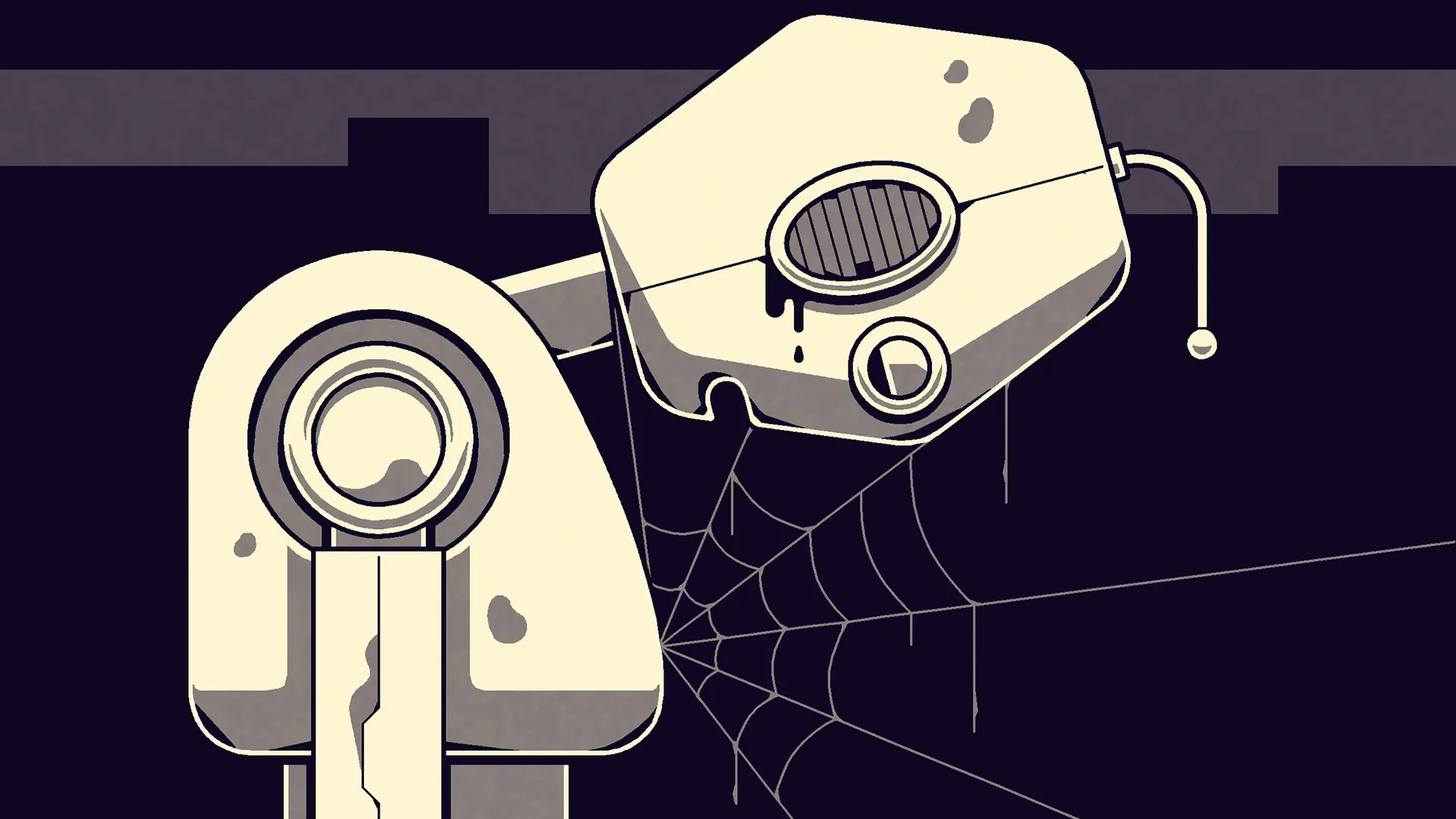尊敬的用户您好,这是来自FT中文网的温馨提示:如您对更多FT中文网的内容感兴趣,请在苹果应用商店或谷歌应用市场搜索“FT中文网”,下载FT中文网的官方应用。

Pepper the humanoid robot was born in 2014. It enjoyed a brief wave of hype, including a visit to the Financial Times to meet the editor. “This is a robot that behaves autonomously, powered by love,” declared Masayoshi Son, the head of its main backer, SoftBank. Alibaba and Foxconn also invested hundreds of millions in the effort to make robotics a ubiquitous part of daily life. Yet it was not to be. You still find the occasional Pepper in a public library in Japan, unplugged, its head bowed, like a four-foot tall Pinocchio that dreamt of becoming a real boy but never did. Production halted in 2021 and only 27,000 units were ever made.
人形机器人Pepper诞生于2014年。它曾经受到短暂的追捧,包括前往英国《金融时报》与编辑会面。其主要支持者软银公司(SoftBank)的掌门人孙正义说:“这是一个自主行动的机器人,由爱驱动。”阿里巴巴和富士康也投入了数亿美元,努力让机器人成为日常生活中无处不在的一部分。然而事与愿违。日本的公共图书馆里偶尔还能看到Pepper,但它没有插电,低着头,就像一个四英尺高的匹诺曹,梦想着成为一个真正的男孩,但从未实现。该产品于2021年停产,仅生产了27000台。
Yet the vision of humanoid robots — of machines so like ourselves they can perform all the work we do not want to — is too alluring to abandon for long. The recent, dramatic advances in artificial intelligence have spurred a new wave of enthusiasm for robotics. “The next wave of AI is physical AI. AI that understands the laws of physics, AI that can work among us,” said Jensen Huang, chief executive of chip designer Nvidia, earlier this year. Nvidia has ridden the boom in training AI models to become the world’s second-largest company by market capitalisation.
然而,人形机器人的愿景——这样的机器人非常像我们自己,可以完成我们不想做的所有工作——太诱人了,让人无法长久放弃。最近,人工智能取得的巨大进步激发了人们对机器人技术的新一轮热情。芯片设计公司英伟达(Nvidia)的首席执行官黄仁勋(Jensen Huang)今年早些时候说:“下一波人工智能浪潮是物理人工智能。理解物理定律的人工智能,可以在我们中间工作的人工智能。”英伟达借助人工智能模型训练的热潮成为全球市值第二大的公司。
Billions of dollars in venture capital are pouring into robotics start-ups. They aim to apply the same kind of model training techniques that let computers forecast how a protein will fold or generate startling realistic text. They aim, first, to let robots understand what they see in the physical world, and second, to interact with it naturally, solving the huge programming task embodied in as simple an action as picking up and manipulating an object.
数十亿美元的风险投资正涌入机器人初创企业。他们的目标是应用同样的模型训练技术,让计算机预测蛋白质将如何折叠或生成惊人的逼真文本。首先,他们希望让机器人理解他们在物理世界中看到的东西,其次,让机器人能够自然地与之互动,解决如拾取和操控物体这样简单动作中所蕴含的巨大编程任务。
Such is the dream. The latest round of investors and entrepreneurs, however, are likely to end up just as disappointed as those who backed Pepper. That is not because AI is not useful. Rather, it is because the obstacles to making an economically viable robot that can cook dinner and clean the toilets are a matter of hardware, not just software, and AI does not in itself address, let alone resolve them.
这就是我们的梦想。然而,最新一轮的投资者和创业者很可能会像那些支持Pepper的人一样失望而归。这并不是因为人工智能没有用。相反,而是因为要制造出经济上可行、既能做饭又能打扫厕所的机器人,所面临的障碍是硬件问题,而不仅仅是软件问题,人工智能本身并不能处理这些问题,更不用说解决它们了。
These physical challenges are many and difficult. For example, a human arm or leg is moved by muscles, whereas a robotic limb must be actuated by motors. Each axis of motion through which the limb must move requires more motors. All of this is doable, as the robotic arms in factories demonstrate, but the high-performance motors, gears and transmissions involved create bulk, cost, power requirements and multiple components that can and will break down.
这些物理层面的挑战既多又难。例如,人的手臂或腿是通过肌肉运动的,而机器人肢体则必须由电机驱动。每个运动轴都需要更多的电机来实现肢体的移动。虽然正如工厂中的机械臂所展示的那样,所有这些都是可以做到的,但其中涉及的高性能电机、齿轮和变速箱造成了体积、成本、功率要求以及可能并将会出现故障的多个组件。
After creating the desired motion, there is the challenge of sensing and feedback. If you pick up a piece of fruit, for example, then the human nerves in your hand will tell you how soft it feels and how hard you can afford to squeeze it. You can taste whether food is cooked and smell whether it is burning. None of those senses is easy to provide for a robot, and to the extent they are possible, they add more cost. Machine vision and AI may compensate, by observing whether the fruit is squashed or the food in the pan has gone the right colour, but they are an imperfect substitute.
在创造出所需的运动之后,还有传感和反馈方面的挑战。例如,如果你拿起一个水果,那么你手上的神经会告诉你它有多软,你可以用多大的力气捏它。你可以尝出食物是否煮熟,闻到食物是否烧焦。要为机器人提供这些感官都不容易,而且即使有可能,也会增加成本。机器视觉和人工智能可以通过观察水果是否压扁或锅里的食物是否变色来进行补偿,但它们并不完美。
Then there is the issue of power. Any autonomous machine needs its own energy source. The robot arms in factories are plugged into the mains. They cannot move around. A humanoid robot is most likely to use a battery, but then there are trade-offs with bulk, power, strength, flexibility, operating time, usable life and cost. These are just some of the problems. Many clever people are working to solve them and they are making progress. But the point is that these are physical challenges, long-standing and difficult. Even a revolution in AI does not make them go away.
然后是电力问题。任何自主机器都需要自己的能源。工厂里的机械臂都插在电源上,无法四处移动。人形机器人最有可能使用电池,但这涉及到体积、功率、强度、灵活性、运行时间、使用寿命和成本之间的权衡。这些只是其中的一些问题。许多聪明的人正在努力解决这些问题,并且取得了进展。但关键是,这些是长期存在且困难的物理挑战。即使人工智能领域发生革命,也无法消除这些问题。
What, then, does AI make possible in the physical world? Rather than imagine how the technology will allow new machines, it is more practical to imagine how existing machines will change once AI is applied to them.
那么,人工智能能为物理世界带来什么呢?与其想象这项技术将如何造就新的机器,不如想象一下一旦人工智能应用于现有机器,它们将发生怎样的变化,这才是更实际的做法。
The obvious example is self-driving vehicles. In this case, the machine does not need to change at all: a car’s movement through the physical world and its power source will work as they always have, while the sensing involved in driving a car is almost entirely visual. With the new vogue for AI, the hype cycle for autonomous vehicles has died down. It should actually be the opposite: self-driving is a vast market and it is the real-world challenge AI can most easily tackle, a point that anybody tempted to invest in other applications to robotics should ponder.
最明显的例子就是自动驾驶汽车。在这种情况下,机器根本不需要改变:汽车在物理世界中的移动及其动力源将一如既往地工作,而驾驶汽车所涉及的传感几乎完全是视觉的。随着人工智能的新潮流,自动驾驶汽车的炒作周期已经平息。实际上,情况应该恰恰相反:自动驾驶汽车是一个广阔的市场,也是人工智能最容易应对的现实挑战,任何想投资机器人其他应用的人都应该思考这一点。
It also makes sense to think about how the robots that already exist — from industrial robotic arms to robot vacuum cleaners — will evolve. AI-powered machine vision will subtly increase the range of tasks a robotic arm can perform and make it safer for them to work alongside humans. Lightweight, single-purpose devices such as robot vacuum cleaners will gradually become more useful. In Chinese hotels, for example, it is already quite common to have a robot bring deliveries to your room. That kind of limited and controlled autonomy is the most easily delivered.
此外,考虑一下已经存在的机器人——从工业机械臂到机器人吸尘器——将如何发展也是很有意义的。人工智能驱动的机器视觉将巧妙地增加机械臂可执行的任务范围,并使其与人类一起工作时更加安全。机器人吸尘器等轻型、单一用途的设备将逐渐变得更加有用。例如,在中国的酒店里,让机器人把外卖送到房间已经非常常见了。这种有限的、可控的自主性是最容易实现的。
In this way, AI will slowly advance us closer to androids. As for a robot like Pepper that can clean the toilet — sadly it is far easier to make one that writes bad poetry, and that is unlikely to change any time soon.
通过这种方式,人工智能将慢慢推动我们向人形机器人靠近。至于像Pepper这样能清洁马桶的机器人——很遗憾,制造一个会写糟糕诗歌的机器人要容易得多,而且这种情况也不可能在短期内改变。